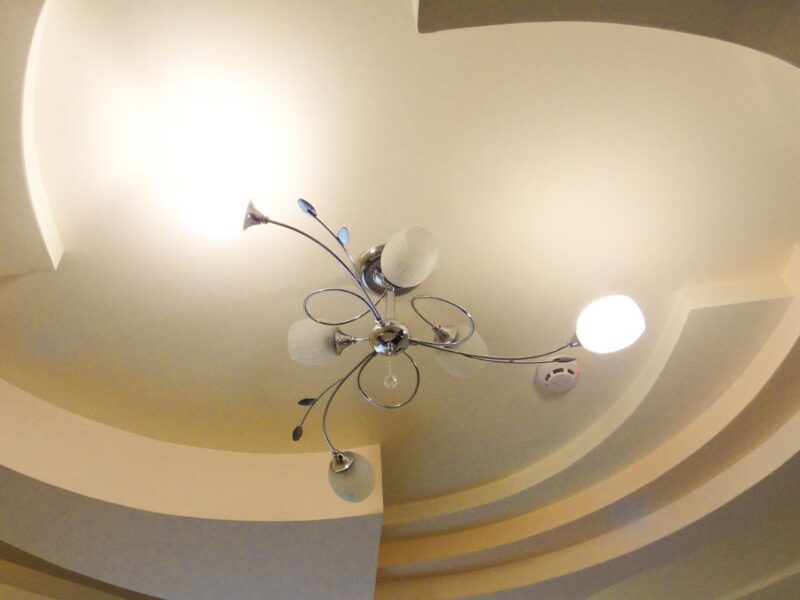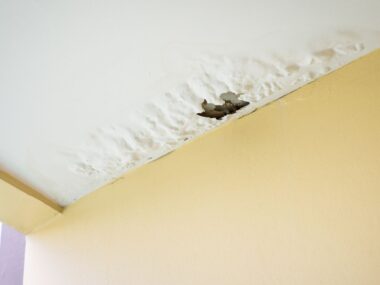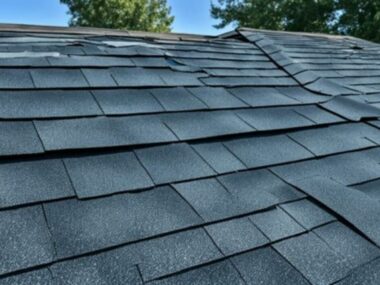Ceilings are often overlooked when it comes to home decoration, but they play an important role in the overall look and feel of a room. The right ceiling texture can add interest and depth, while the wrong one can make a space feel flat and uninviting.
There are many different types of ceiling textures to choose from, and the best one for your home will depend on your personal style and the overall aesthetic you’re trying to achieve.
Here are 11 of the best ceiling texture types to consider for your home:
1. Popcorn Ceiling Texture
Popcorn ceiling texture is one of the most popular and commonly used types of textures. It’s made by applying a stucco material to the ceiling and then using a sprayer to create a popcorn-like effect. Popcorn ceilings were once very popular in homes, but they have since fallen out of favor due to the fact that they can be difficult to clean and repair.
2. Orange Peel Ceiling Texture
Orange peel ceiling texture is similar to popcorn ceiling texture, but it has a more textured and bumpy appearance. It’s made by applying a stucco material to the ceiling and then using a trowel to create an orange peel-like effect. Like popcorn ceilings, orange peel ceilings can be difficult to clean and repair.
3. Knockdown Ceiling Texture
Knockdown ceiling texture is made by applying a thin layer of joint compound to the ceiling and then using a knife to “knock down” the raised peaks, creating a textured but smooth finish. Knockdown textures are fairly easy to repair and touch up, making them a good option for homes with children or pets.
4. Slap Brush Ceiling Texture
Slap brush ceiling texture is made by applying a thin layer of joint compound to the ceiling and then using a wide paintbrush to create a textured finish. Slap brush textures are fairly easy to repair and touch up, making them a good option for homes with children or pets.
5. Rosebud Ceiling Texture
Rosebud ceiling texture is made by applying a thin layer of joint compound to the ceiling and then using a trowel to create a rosebud-like effect. Rosebud textures are fairly easy to repair and touch up, making them a good option for homes with children or pets.
6. Spanish Lace Ceiling Texture
Spanish lace ceiling texture is made by applying a thin layer of joint compound to the ceiling and then using a trowel to create a lace-like effect. Spanish lace textures are fairly easy to repair and touch up, making them a good option for homes with children or pets.
7. Splatter Ceiling Texture
Splatter ceiling texture is made by applying a thin layer of joint compound to the ceiling and then using a brush or roller to create a splattered effect. Splatter textures are fairly easy to repair and touch up, making them a good option for homes with children or pets.
8. Skip Trowel Ceiling Texture
Skip trowel ceiling texture is made by applying a thin layer of joint compound to the ceiling and then using a trowel to create a skipping effect. Skip trowel textures are fairly easy to repair and touch up, making them a good option for homes with children or pets.
9. Sand Swirl Ceiling Texture
Sand swirl ceiling texture is made by applying a thin layer of joint compound to the ceiling and then using a trowel to create a swirl effect. Sand swirl textures are fairly easy to repair and touch up, making them a good option for homes with children or pets.
Popcorn ceiling vs textured ceiling
Popcorn ceiling texture is one of the most popular and commonly used types of textures. It’s made by applying a stucco material to the ceiling and then using a sprayer to create a popcorn-like effect. Popcorn ceilings were once very popular in homes, but they have since fallen out of favor due to the fact that they can be difficult to clean and repair.






